ARTIFACTS FROM THE FUTURE: AN EXPERIENTIAL META-MUSEUM
Artifacts from the future focuses on a future scenario in 2053, working towards the development of meta-objects taken from the future and brought back to the present, along a series of specific thematics.
OUR TOPIC: Increased Surveillance / Decreased Privacy
A quick glance at the Future Scenario imagined
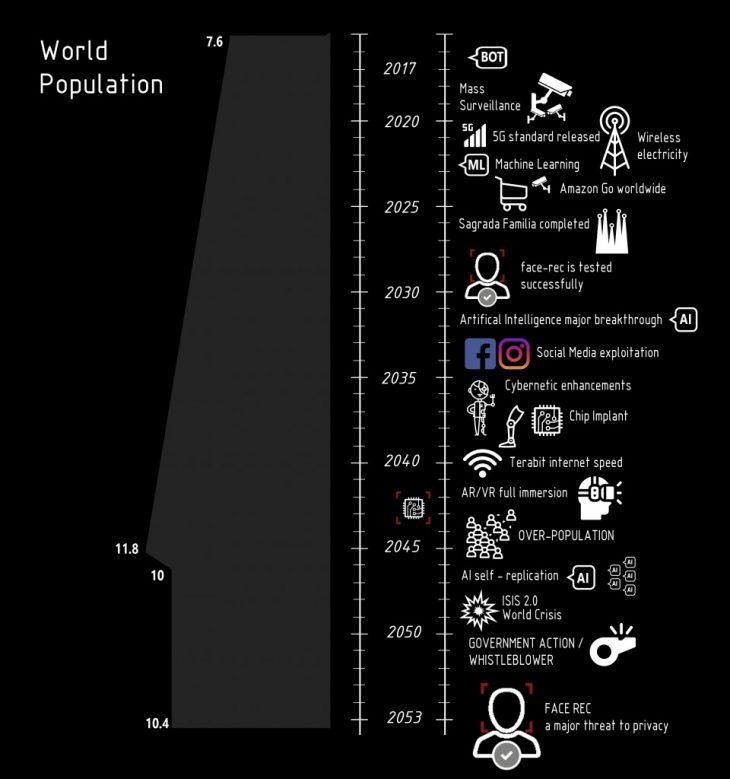
Private companies and individuals can track you without your consent and collect your personal information as well as your face records.
Computers, phones, tablets, gps, microships, implants…
you can get rid of them
but Your Face will always be the same

FaceLess was designed to protect individuals from NON-CONSENSUAL FACIAL IDENTIFICATION as well as to increase SOCIAL PRIVACY.
There are several occasions where our image is captured without consent.
In a world of social media, pictures can damage our image or even expose us in unwanted situations, from children abuse to disasters or even blackmail.
The fact that everyone holds a phone with a camera allows our personal image to be reproduced in seconds through the internet without consent and the consequences can be hazardous.
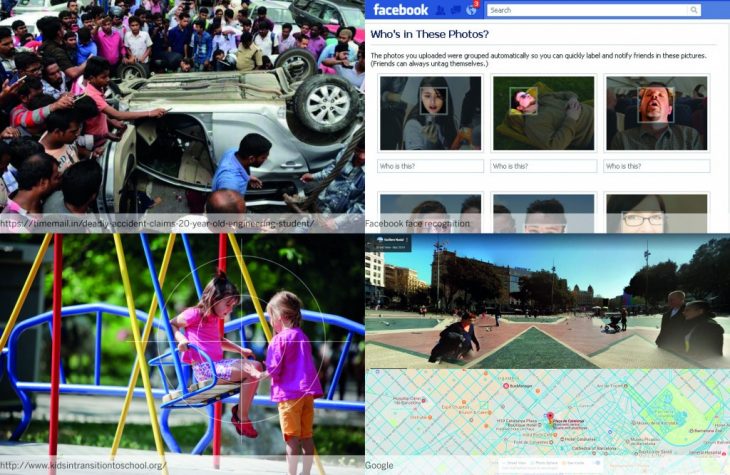
The aim of our project is to allow people of 2053 to live the public space freely without worrying about the cameras.
technology.
Existing projects like the HyperFace (by Hyphen-Labs) try to confuse the cameras by overloading the system with false faces. Other wearables are designed to emit infra-red (IR) light to blind the cameras. However, In our case, we are not trying to hide from the authorities.
Therefore, and after looking at existing projects and technologies, we found out that simple technologies can be the solution:
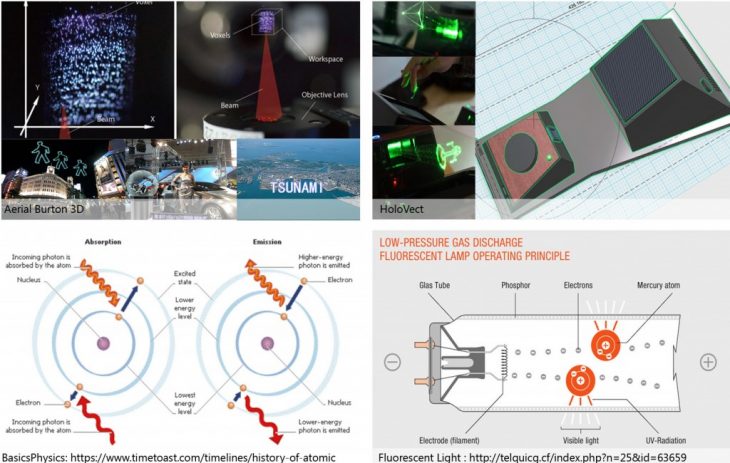 Exciting particles in the air, (the same way Mercury and Phosphor atoms are excited in a fluorescent lamp) but finding a way to make them emit IR instead of light, would be a start. The choice of IR rays is due to IR having the possibility to blur cameras, and to the fact that it is invisible to the naked eye (people won’t see what Faceless is doing unless they are filming you)
Exciting particles in the air, (the same way Mercury and Phosphor atoms are excited in a fluorescent lamp) but finding a way to make them emit IR instead of light, would be a start. The choice of IR rays is due to IR having the possibility to blur cameras, and to the fact that it is invisible to the naked eye (people won’t see what Faceless is doing unless they are filming you)
The Aerial Burton project is made of a powerful laser capable of creating light voxels floating in the air, their work is now focusing on making it less harmful to human beings using femtosecond lasers (which sends bursts of laser instead of a continuous ray).
Furthermore, NO2 particles in air control devices are known to emit IR rays when excited and going back to the normal state, proving or not the presence of ozone (O3) in a room.
Combining such technologies and finding the right reaction between particles and light, we should be able to create a device that emits IR voxels (flying points of light).
The voxels or “controlled” cloud of excited particles would then reshape into a mask or any configuration that the user wants according to a certain algorithm.
how it works.
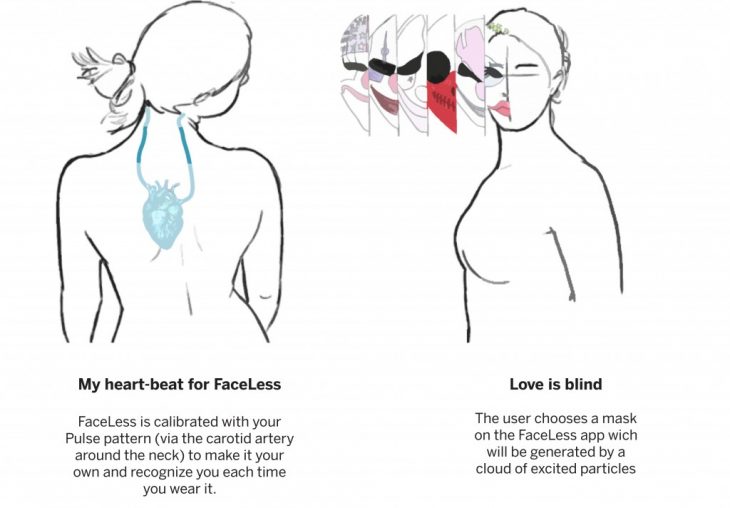
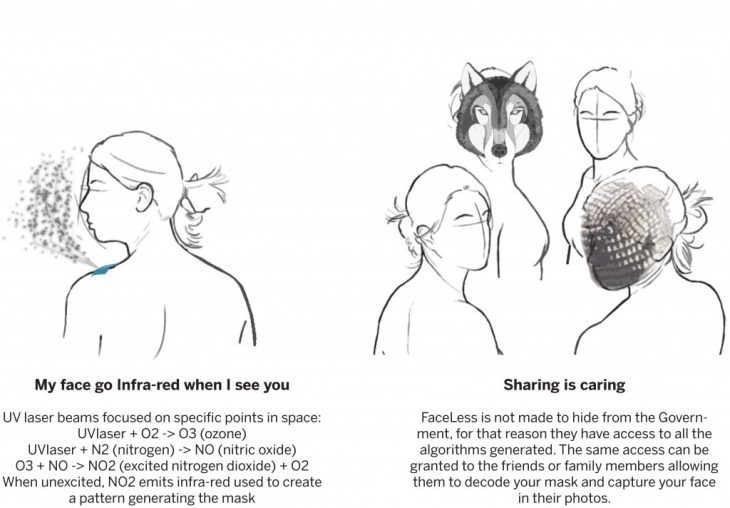
design.
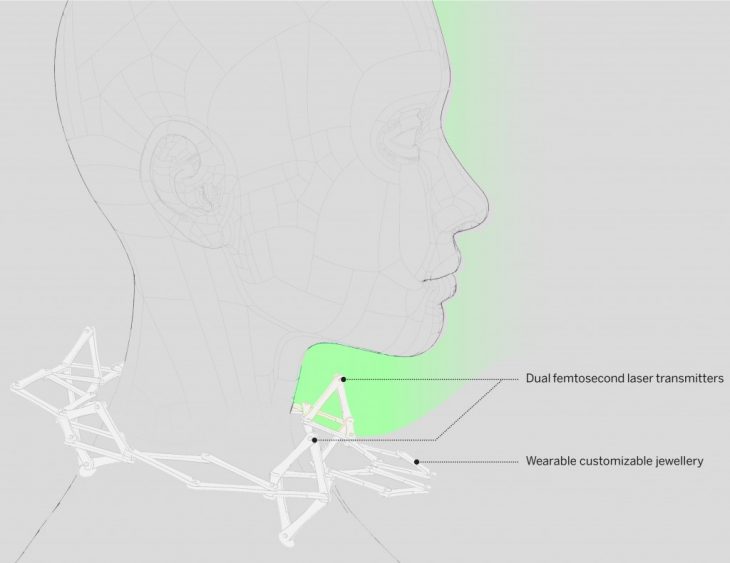
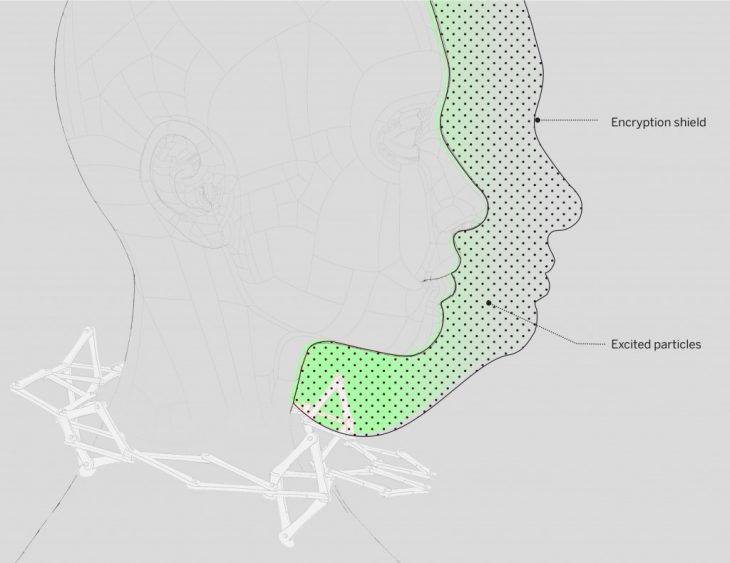
user manual.

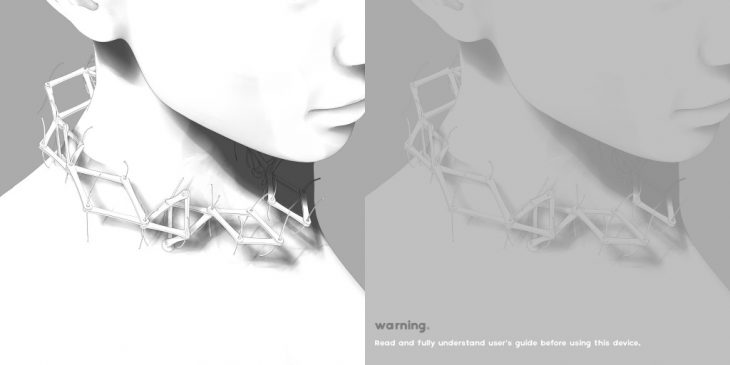
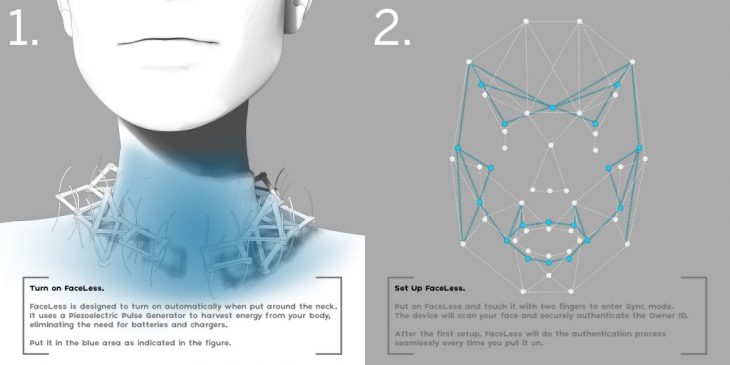
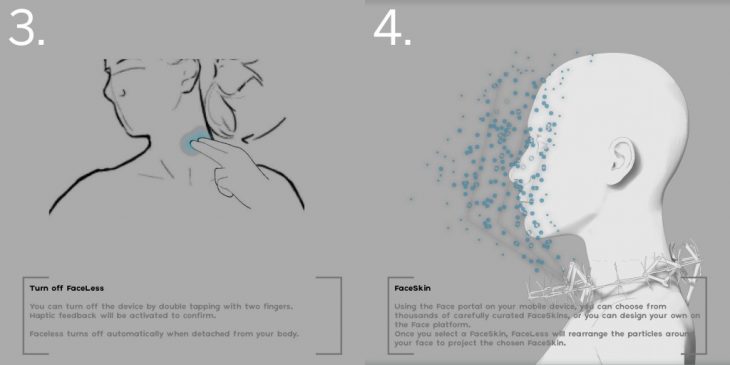
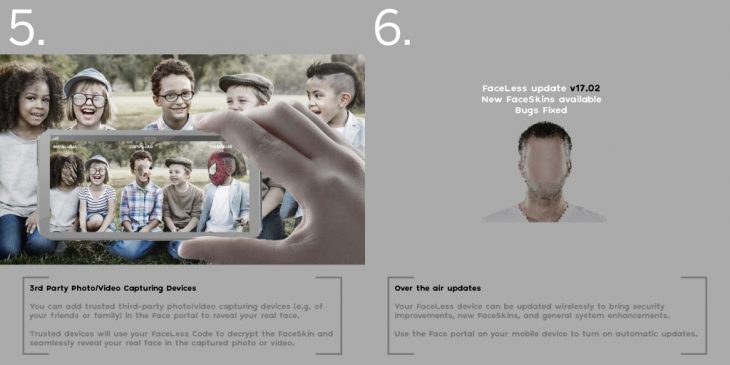
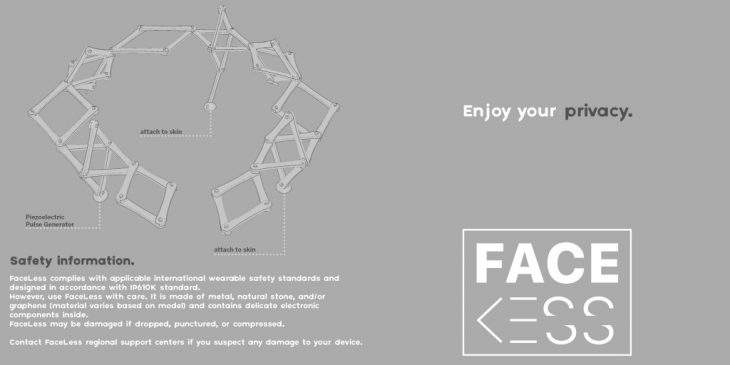
images.
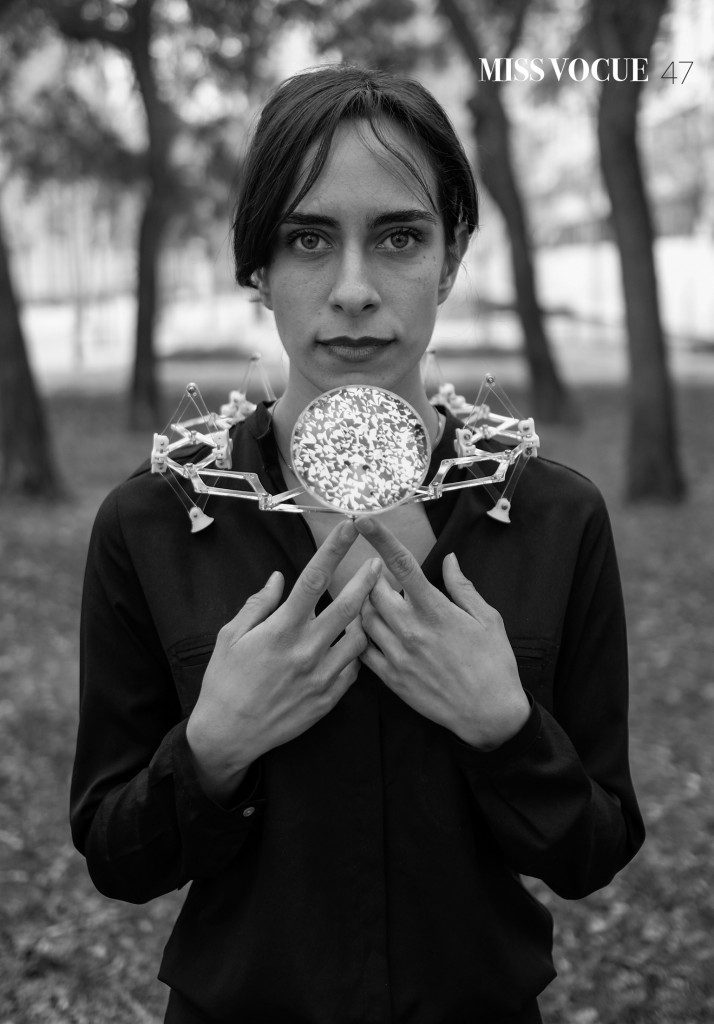
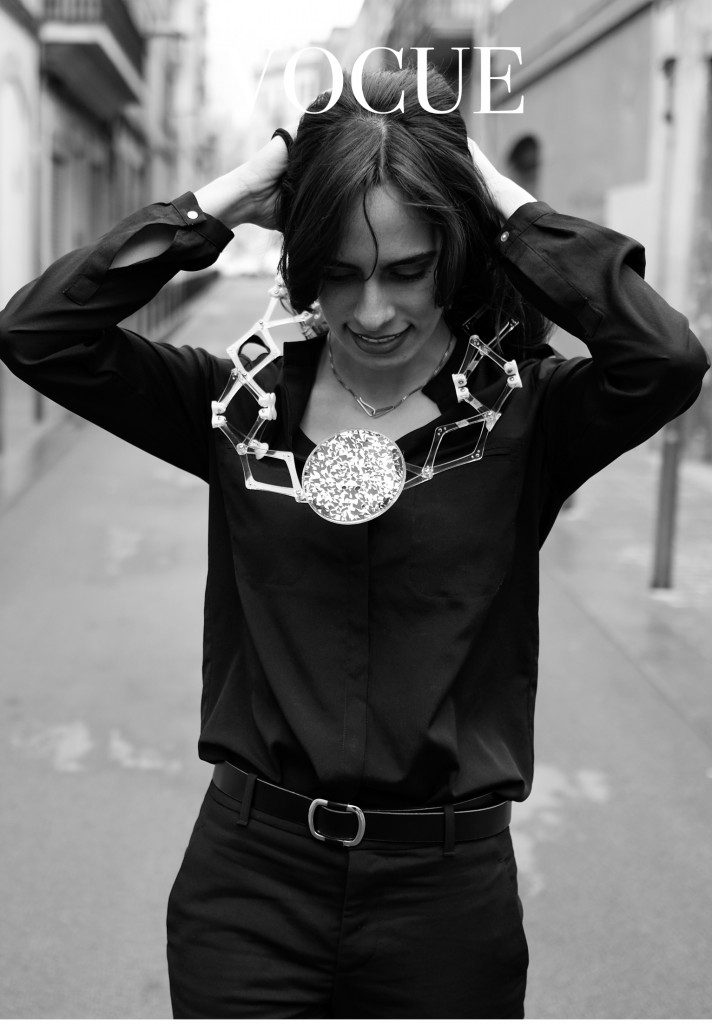
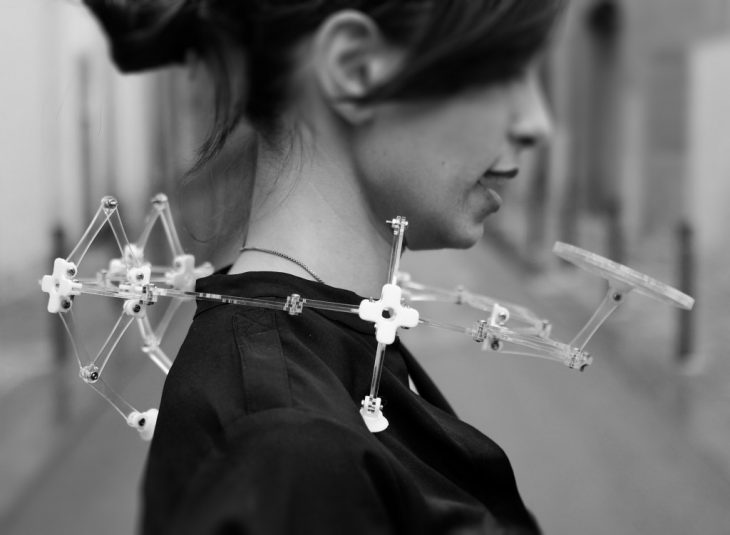
ads.
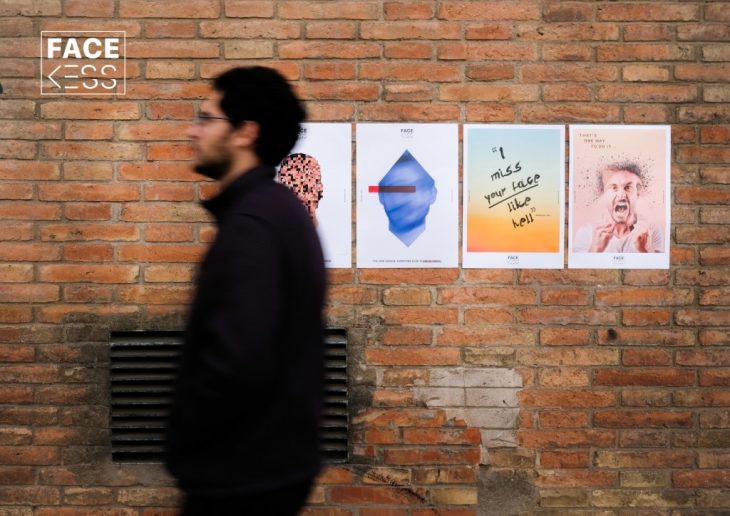


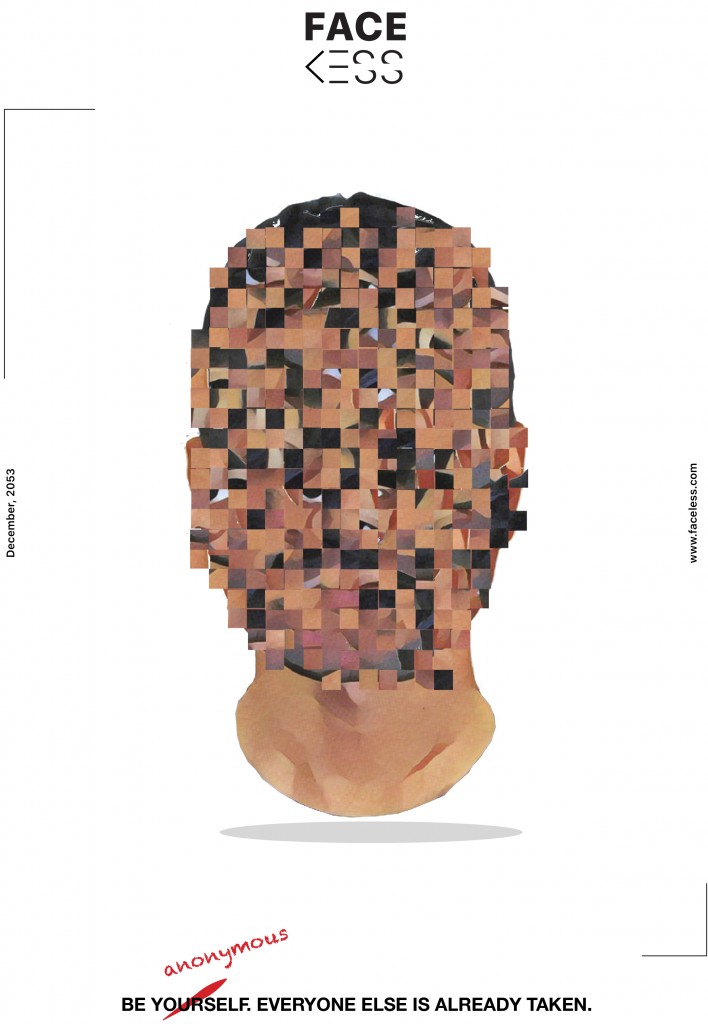
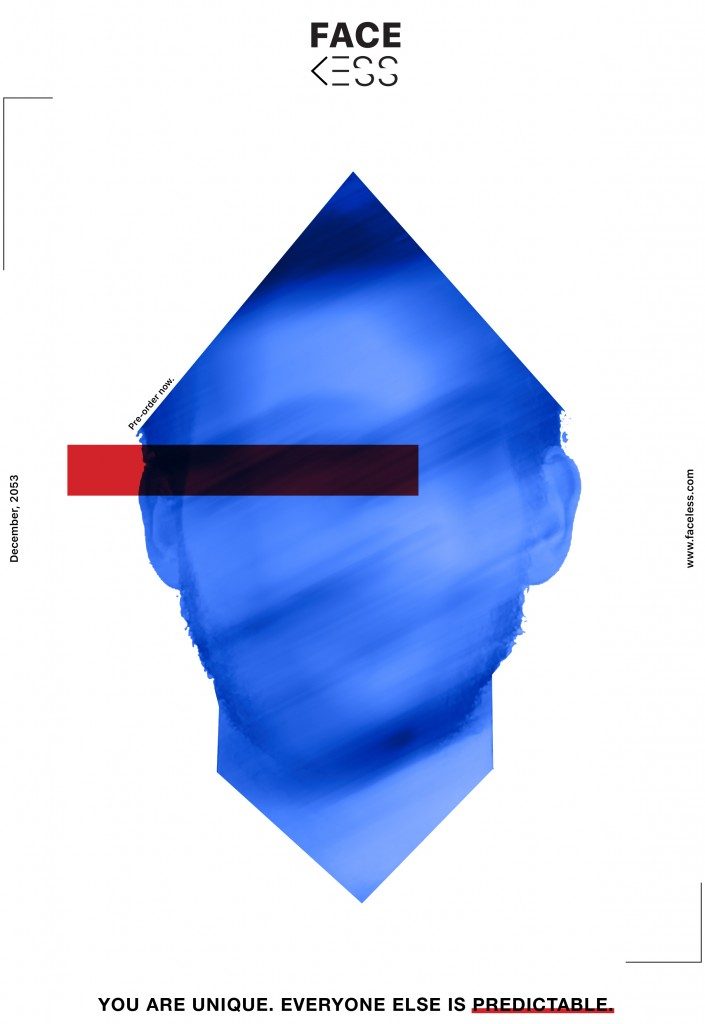
IaaC – MAA01 2017-2018 | Artifacts from the Future
Students:
Anuj Mittal
Francois Nour
Hayder Mahdi
Luciana Teodozio
Stephie Moukarzel
Faculty:
Mathilde Marengo and Ece Tankal
